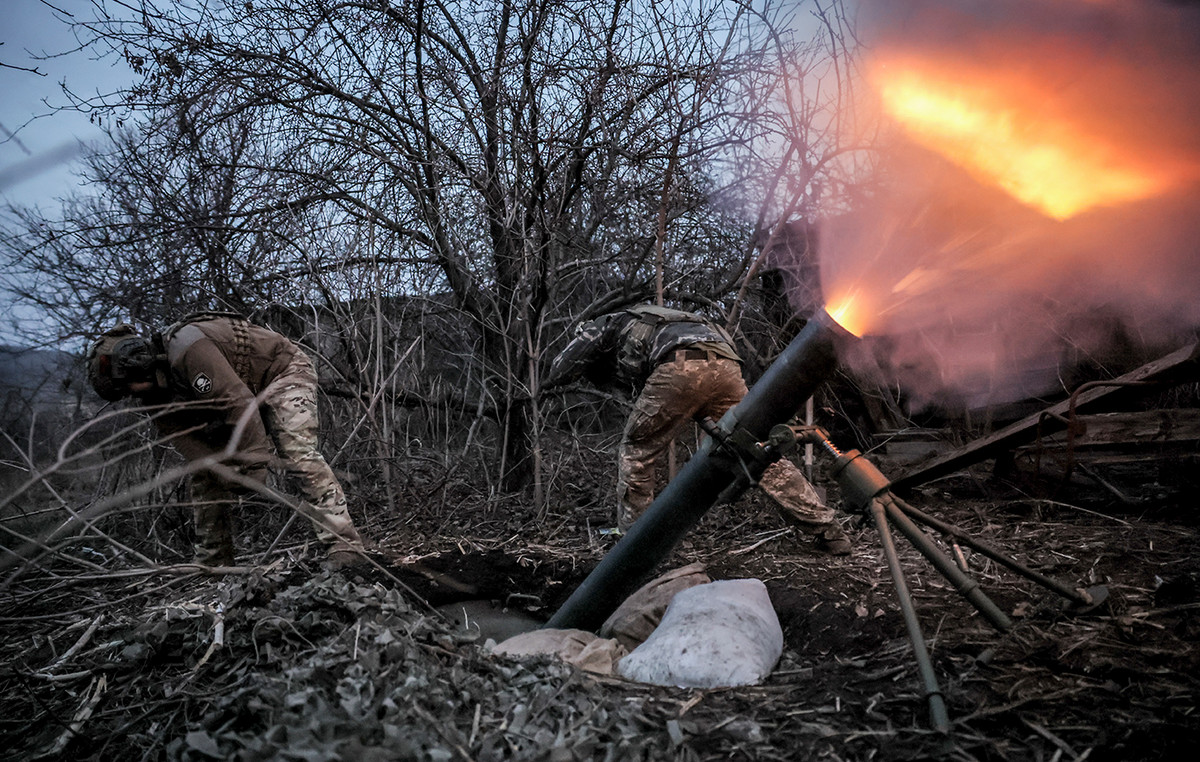At a subway station in the Ukrainian city of Kharkiv, a young woman holds a toy car, a teddy bear and a juice box to a group of schoolchildren.
“These are objects that we encounter in our daily lives,” explains Julia Gorlenko of the State Emergency Service of Ukraine. “They are bright and colorful, but they can also be dangerous,” she adds.
The teacher then points to a replica of a small plastic ammunition that a child can easily mistake for a toy. “This one might rip your head off, or your hand, or your leg.”
As Russia continues its weeks-long bombardment of Ukraine’s second-largest city, the children of Kharkiv are receiving a harsh lesson in the realities of war.
Gorlenko is teaching them to identify Russian explosives. Children are given coloring exercises that show the difference between a grenade and a small soccer ball, or a gift box and a stick of dynamite.
“We used to play with all the toys in the sandbox”, says one of the children named Semen, 6 years old, “but now I’m afraid to pick them up. If you take a toy out of the litter box, something could explode,” she says.
underground life
Gorlenko’s classes take place in a Soviet-era subway station, where thousands of terrified families have sought refuge since the start of the Russian invasion on February 24.
Kharkiv, which is just 40 kilometers from the Russian border, was shelled with artillery that hit civilian sites, including schools, residential buildings and shops.
The heaviest attack was on the administrative building in the central square just over a month ago, but since then daily shelling has been heard in residential areas across the city.
Zeena Petukhova, 36, and her husband were celebrating their daughter’s first birthday when their fifth-floor apartment was hit by a mortar four weeks ago. “We were eating cake when we heard a very unusual sound and we knew we only had seconds to run down the hall,” she says.
Zeena protected her daughter, Alysa, and her husband lay on top of the two, “like a little pyramid, this is the only reason we survive,” she recalls. The windows were blown out by the blast and the family has slept in the subway system ever since.
Some leave the shelter during the day, but life above ground can be dangerous. Last Sunday (3), seven people died and 34 were injured – including three children – after an attack in the Slobidskyi district, in the south of the city.
Residents told the CNN that people were sitting on a park bench when a mortar shell landed nearby.
Last Friday, Ukrainian officials said at least 153 children had been killed and more than 245 children were injured in the country during the war. The Ukrainian attorney general’s office said it was still working to establish the total number of child victims in various cities.
Ghost town
The attacks in Kharkiv have turned the once vibrant city into a ghost town. A third of Kharkiv’s population of 1.4 million is believed to have fled the city, officials say.
Most shops, offices and places to eat are closed and there are few people and cars on the streets. After the nightly curfew, the city is pitch-black and the silence is broken only by the sound of artillery fire and air-raid sirens.
Below ground, the sounds of war are still within earshot.
Babushka Liuda, 69, moved her family of 12 to the subway on the first day of the war. “We heard so many bombs that we didn’t know where to run or how to save ourselves,” she says. “At night there is still a flood… I wish I could live my old age in peace.”
Source: CNN Brasil
I’m James Harper, a highly experienced and accomplished news writer for World Stock Market. I have been writing in the Politics section of the website for over five years, providing readers with up-to-date and insightful information about current events in politics. My work is widely read and respected by many industry professionals as well as laymen.







